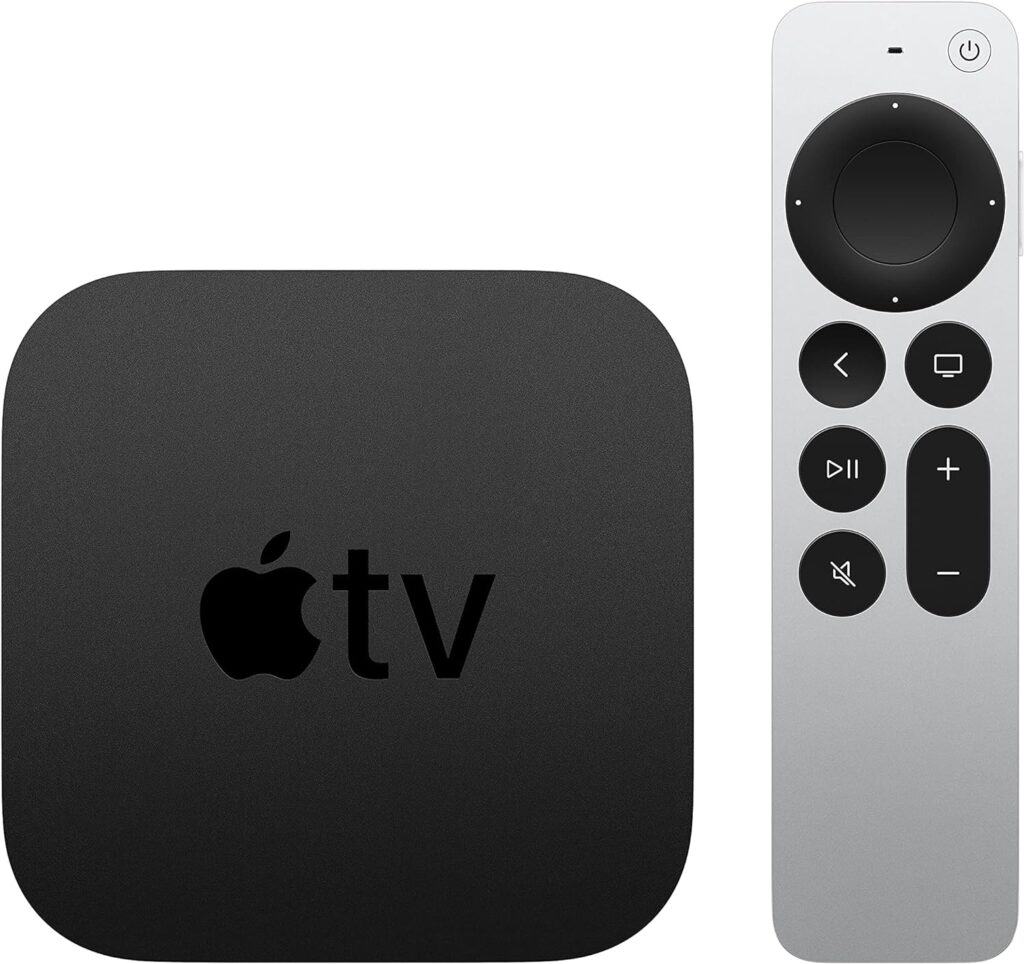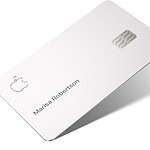Apple’s set-top box hasn’t been refreshed since 2022, and competitors such as Roku, Amazon, and Google have raced ahead on price and gaming-centric features. A new Apple TV 4K arriving later this year would let Apple re-assert its premium position while finally attacking the sub-$100 market segment where it has historically struggled.
Release Window: A Fall Hardware Showcase
Multiple supply-chain reports and leaks suggest an October-or-November unveiling, lining the streamer up alongside new Macs, iPads, and possibly a redesigned HomePod. The timing keeps Apple on a three-year cadence and ensures the box ships with tvOS 26 already onboard.

Under the Hood: A-Series Muscle & Apple-Built Connectivity
- A17 Pro—or even A18—SoC: Early firmware references indicate the same 3-nanometer silicon powering iPhone 15 Pro (and possibly the upcoming A18) is in testing, promising up to 50 percent faster GPU performance for richer Apple Arcade titles and smoother 4K120 playback.
- First-party Wi-Fi 6E/7 + Bluetooth 5.3 modem: Apple’s in-house wireless chip should deliver lower latency for cloud gaming and HomeKit accessories while laying the groundwork for Thread and Matter expansion.
- UWB in the Siri Remote: Code snippets suggest Ultra-Wideband support, letting you ping a misplaced remote from your iPhone just like an AirTag.
- On-device Neural Engine: Extra cores will run Apple Intelligence features locally, reducing Siri round-trip time and enabling offline query handling.
A tvOS 26 Experience Built Around “Liquid Glass”
The fall launch dovetails with tvOS 26’s new Liquid Glass UI: translucent panels float above content, live previews stay in view while you tweak settings, and quick-switch user profiles surface personalized queues instantly. Apple Music Sing also levels up—your iPhone becomes a wireless microphone, friends can queue songs, and real-time lyric effects turn karaoke into a party game.
AI Everywhere: Apple Intelligence in Your Living Room
Expect context-aware Siri that recognizes who’s speaking, recommends shows based on recent FaceTime chats, and can compress three hours of WWDC footage into a two-minute highlight reel on command. Scene recognition will let you jump directly to “that car chase in episode 4,” while conversational follow-ups (“add this actor to my watchlist”) flow naturally.
Built-In Camera…or a Continuity Twist?
Prototypes reportedly include a landscape 2-MP camera for FaceTime and gesture control, but Apple is also testing software-only Continuity Camera that enlists your iPhone or iPad when you start a call. A decision may hinge on hitting that $99 price target.
Price Strategy & Model Split
Analysts believe Apple will ship two tiers:
- Base model (~$99) — 64 GB storage, A17 Pro, Wi-Fi 6E, no camera
- Premium model (~$149-$179) — 128 GB, A18, Wi-Fi 7, Thread radio, optional camera
Such a split mirrors the current Apple TV lineup but finally positions the entry unit against Roku Ultra, Chromecast 4K, and Amazon Fire TV 4K Max on price.
Gaming & Vision Pro Synergy
With MetalFX upscaling on A-series silicon, Apple could market the new box as a “console-lite” platform: expect 120 fps Apple Arcade titles, cloud saves that follow you from iPhone to Mac, and seamless second-screen play on Vision Pro. Early developer logs mention external game-controller haptics and spatial audio hand-off when you don a headset mid-stream.
Should You Upgrade or Wait?
If your current Apple TV dates back to 2017 or lacks Thread support, waiting a few months nets faster silicon, deeper HomeKit integration, and the full Liquid Glass interface (tvOS 26’s most eye-catching elements skip older hardware). Home theater buffs who just bought the 2022 model can safely sit tight unless Apple’s AI features—or that rumored camera—prove irresistible.
Key Dates to Watch
- September 2025 — tvOS 26 public release for existing models
- October/November 2025 — Apple TV keynote and pre-orders
- Holiday 2025 — Retail availability and first-wave Apple Intelligence roll-out
Whether you’re eyeing a living-room upgrade or plotting a full smart-home makeover, Apple’s next box looks set to deliver the price cut fans have begged for—without watering down the premium experience that defines Apple TV.
How 4K and HDR Content On Netflix Works With Apple TV 4K
Enjoying Netflix content in 4K and HDR on Apple TV 4K delivers a premium viewing experience with stunning visual quality. To stream Netflix content in 4K HDR on your Apple TV 4K, you need a compatible 4K HDR television, a high-speed HDMI cable (preferably HDMI 2.0 or later), and a Netflix subscription plan that includes Ultra HD content. These requirements ensure you get the best possible picture quality when streaming your favorite shows and movies.
Setting up your Apple TV 4K correctly is essential for optimal performance. The device automatically detects and displays content in the correct HDR format, whether it’s HDR10 or Dolby Vision. However, users may need to adjust certain settings to resolve potential audio issues, especially when using features like Dolby Atmos. With the right configuration, your Apple TV 4K will seamlessly deliver stunning visuals that showcase the full capabilities of your entertainment setup.
Netflix automatically streams in the highest quality possible based on your internet connection speed and device capabilities. The service adapts to provide the best experience available, whether that’s standard HD or the more impressive 4K Ultra HD with HDR. This adaptive streaming ensures viewers always get the best visual experience their setup can support without having to manually adjust settings for each show or movie.
Netflix 4K and HDR content on Apple TV 4K generally works by ensuring your entire setup meets specific technical requirements and optimal settings are applied.
Key Requirements for 4K and HDR Playback:
- Apple TV 4K Model: All generations of Apple TV 4K (1st, 2nd, and 3rd generation) support Netflix in Dolby Vision and HDR10 formats.
- Compatible TV: Your television must be compatible with 4K (Ultra HD) and HDR streaming from Netflix. It should be connected to your Apple TV 4K via an HDMI port that supports HDCP 2.2 or later (often labeled HDMI 1).
- Netflix Subscription Plan: You need a Netflix plan that supports streaming in 4K (Ultra HD) and HDR.
- Internet Speed: A stable internet connection speed of 15 megabits per second or higher is recommended for smooth 4K and HDR streaming.
- HDMI Cables: Using Premium High Speed HDMI or Ultra High Speed HDMI cables is advisable for reliable 4K and HDR signal transmission.
- Netflix Playback Settings: Ensure your streaming quality is set to “High” within your Netflix account’s playback settings.
How it Works:
Netflix content pages typically display video quality labels such as “4K,” “4K HDR,” “HD,” “Dolby Vision,” or “HDR/HDR10+.” If both the content and your device support a high dynamic range format, an HDR label will appear. For content available in both 4K and Dolby Vision, you might only see the Dolby Vision label.
For optimal performance, it’s recommended to configure your Apple TV 4K settings:
- Go to
Settings > Video and Audio > Match Content. - Enable “Match Dynamic Range” to ensure your Apple TV 4K adjusts its output to match the original dynamic range of the Netflix content.
- Enable “Match Frame Rate” to match the content’s original frame rate.
Common Issues and Troubleshooting:
Some users have reported inconsistent 4K/HDR playback or perceived poor quality on Netflix via Apple TV 4K. Common causes and potential solutions include:
- HDMI Connectivity: Verify all HDMI cables are securely connected and compatible with 4K/HDR formats. Issues can sometimes stem from the HDMI cable itself or the specific HDMI input on your TV.
- TV Settings: Check your TV’s settings. Some TVs require you to enable HDR on specific HDMI inputs or adjust settings like “Enhanced HDMI” or “Deep Color.”
- Audio Receiver/Soundbar: If you use an audio receiver or soundbar, ensure it supports 4K and HDR pass-through, and that its firmware is up to date. You might temporarily connect the Apple TV 4K directly to your TV to rule out your audio equipment as the cause.
- Netflix App Issues: Sometimes, force-closing and restarting the Netflix app on your Apple TV 4K can resolve playback glitches.
- AV1 Codec: There have been discussions regarding Netflix’s utilization of the AV1 video codec. While Apple TV 4K models are capable of software decoding AV1, the actual support and implementation within the Netflix app can affect performance.
Key Takeaways
- Apple TV 4K automatically detects and displays Netflix content in the proper HDR format when connected to a compatible 4K HDR television.
- A Netflix Premium subscription plan, high-speed internet connection, and HDMI 2.0+ cable are required for 4K HDR streaming.
- Adjusting your Apple TV settings may be necessary to resolve audio issues and ensure the best streaming quality for Netflix content.
Streaming Netflix in 4K HDR on Apple TV 4K
Apple TV 4K offers one of the best platforms for experiencing Netflix’s 4K HDR content with stunning visual clarity. Getting the optimal streaming experience requires proper setup and understanding of compatible technologies.
Understanding 4K and HDR
4K (also called UHD) refers to resolution – specifically 3840×2160 pixels, which is four times the resolution of standard HD. HDR (High Dynamic Range) is a separate technology that expands the range of both contrast and color, creating more realistic images.
Netflix offers several HDR formats including HDR10, HDR10+, and Dolby Vision. Dolby Vision is considered premium as it processes metadata on a scene-by-scene basis for more accurate colors and contrast.
Apple TV 4K supports all major HDR formats, with the latest models supporting both HDR10+ and Dolby Vision. This comprehensive support ensures users get the best possible picture quality when streaming Netflix content.
The difference between standard content and 4K HDR is significant. Colors appear more vibrant, bright areas shine brighter, and dark scenes show more detail.
Setting Up Apple TV 4K for Netflix
First, ensure your Apple TV 4K is connected to a 4K HDR-compatible TV using a high-speed HDMI cable (HDMI 2.0 or newer). Not all HDMI cables support 4K HDR, so check specifications.
Go to Settings > Video and Audio on your Apple TV and select the appropriate display format. For best results with Netflix:
- Choose 4K Dolby Vision if your TV supports it
- Enable “Match Content” settings:
- Turn on “Match Dynamic Range”
- Turn on “Match Frame Rate”
These settings help Apple TV 4K adjust its output to match the original format of what you’re watching, preventing conversion issues.
Make sure your Netflix account has the Premium plan, which is required for 4K streaming. Install the latest version of the Netflix app from the App Store.
Optimizing Video Quality on Netflix
Within the Netflix app, check your playback settings. Navigate to Account > Profile > Playback Settings and select “High” for data usage per screen.
If you experience poor quality:
- Check your internet speed (25 Mbps or faster recommended for 4K)
- Ensure no other devices are using significant bandwidth
- Restart your Apple TV and router
Some users report issues with Netflix quality on Apple TV 4K. A common fix involves adjusting the “Match Content” settings mentioned above.
To verify you’re watching in 4K HDR, press the down button on your Apple TV remote while playing content. An information banner will display showing resolution and HDR format.
Compatibility and Requirements
To stream Netflix in 4K HDR on Apple TV 4K, you need:
Hardware:
- Apple TV 4K (any generation)
- 4K TV with HDR support
- High-speed HDMI cable
Software:
- Latest tvOS update
- Updated Netflix app
Subscription:
- Netflix Premium tier
Internet:
- 25 Mbps or faster connection
- Stable connection (wired preferred)
Not all Netflix content is available in 4K HDR. Look for content labeled with “4K” or “Dolby Vision” icons. Most Netflix originals and newer films offer 4K HDR versions.
Regional restrictions may apply to some content. The BBC, for instance, uses MPEG-Dash which isn’t fully compatible with Apple’s HLS streaming protocol, affecting UK viewers.
Frequently Asked Questions
Netflix users with Apple TV 4K devices often have specific questions about optimizing their streaming experience. These questions cover everything from setup requirements to troubleshooting common picture quality issues.
How can I enable 4K and HDR streaming for Netflix on my Apple TV 4K?
To enable 4K and HDR streaming for Netflix on Apple TV 4K, users need to ensure they have the appropriate subscription tier. Netflix requires the Premium plan to access 4K and HDR content.
Once subscribed to the Premium plan, users should navigate to Settings > Video and Audio on their Apple TV 4K. Select 4K Dolby Vision (or HDR) at 60Hz for the best results.
The Netflix app should automatically deliver content in the highest quality available based on these settings and the user’s subscription level.
What are the requirements to stream Netflix in 4K and HDR on Apple TV 4K?
A Premium Netflix subscription is essential for accessing 4K and HDR content. This higher-tier subscription is required regardless of what device is being used.
Users need a 4K HDR-compatible television connected to their Apple TV 4K with an HDMI cable that supports at least 18Gbps speeds (HDMI 2.0 or higher). Some cables advertise this capability as “4K@60Hz.”
An internet connection speed of at least 25 Mbps is recommended for consistent 4K streaming without buffering or quality drops.
Why am I experiencing poor video quality while streaming Netflix on my Apple TV 4K?
Poor video quality often stems from insufficient internet bandwidth. Users should test their connection speed and ensure it consistently provides at least 25 Mbps.
Inappropriate HDMI cables can limit video quality. As noted in the search results, using an HDMI cable that supports at least 18Gbps speeds (HDMI 2.0) is crucial for proper 4K HDR transmission.
Some users report that the Netflix app on Apple TV 4K occasionally shows more compression artifacts than native TV apps. Checking both the Apple TV settings and Netflix app settings can help identify the cause.
What settings should I adjust on my Apple TV 4K to improve Netflix streaming quality?
For optimal Netflix streaming, set the Apple TV 4K to 4K HDR or Dolby Vision at 60Hz with Chroma 4:2:2 as suggested in the search results. These settings provide the best balance of quality and compatibility.
Match Content and Match Dynamic Range settings should be enabled. These settings allow the Apple TV 4K to adapt to the specific format of each title automatically.
With tvOS 11.2 and later, the Apple TV 4K automatically delivers the appropriate HDR format for the content being viewed, which simplifies the viewing experience.
Is there a difference in streaming Netflix in 4K HDR on an iPhone compared to Apple TV 4K?
Apple TV 4K provides a more consistent 4K HDR streaming experience compared to iPhones due to its stable, dedicated hardware and consistent power supply.
iPhones with HDR displays can show HDR content from Netflix, but most models don’t support 4K resolution due to their smaller screen sizes. The content is typically optimized for mobile viewing.
The Apple TV 4K connects directly to home theater systems, enabling superior audio experiences like Dolby Atmos, which aren’t fully realized on iPhone speakers.
How do I verify if the content on Netflix is playing in 4K HDR on my Apple TV 4K?
While watching content on Netflix, users can swipe down on the Apple TV remote to display an information banner. This banner will indicate if the content is playing in 4K and whether HDR or Dolby Vision is active.
Netflix titles that support 4K and HDR will display specific icons in their description screens before playback begins. Look for “4K Ultra HD” and “HDR” or “Dolby Vision” badges.
Some TVs will also display a notification in the corner of the screen when they begin receiving an HDR signal, which serves as additional confirmation.







